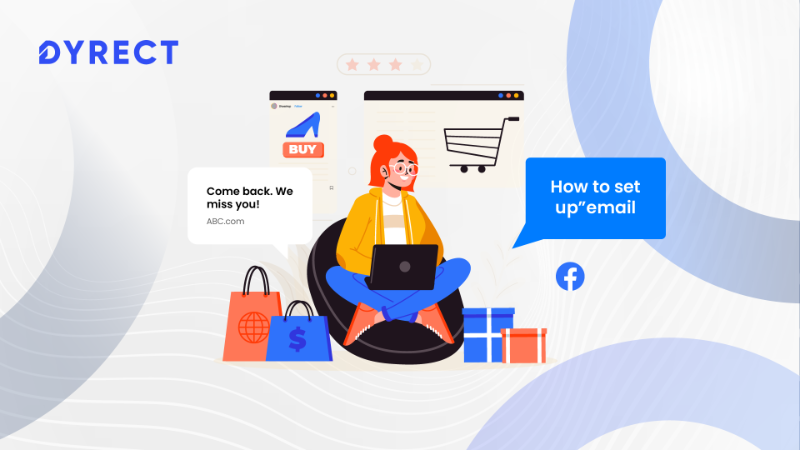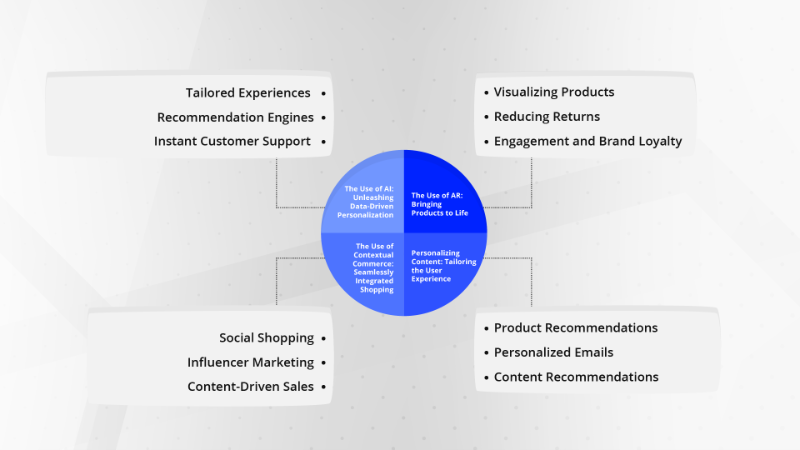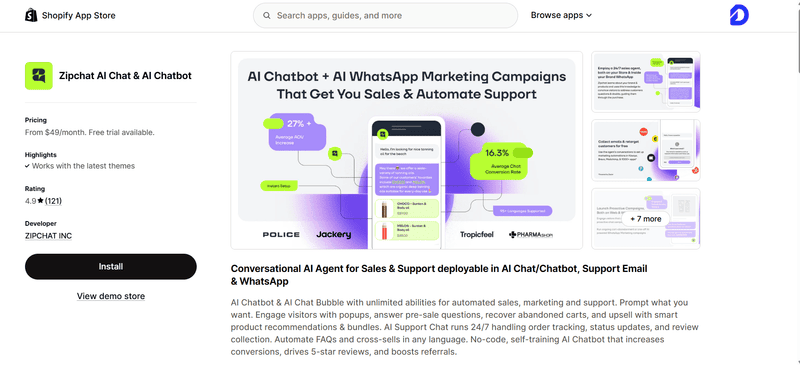
A lot of successful brands owe their success to putting the interests of their customers in the center of everything they do. An essential part of this strategy involves paying attention to product experience management.
Product experience management, or PXM, is a holistic approach that encapsulates every interaction a customer has with a product or service throughout their entire journey.
In this quick read, we will explore why product experience management is essential and delve into the top trends and tips for effective product experience management.
Why Do You Need Product Experience Management?
Before we dive into building a product experience management strategy, let’s talk about why every business selling a product or service needs to prioritize product experience management.
Lower Churn Rate
Churn rate refers to the percentage of customers who stop using your product or service within a specified period. PXM helps lower churn rates by ensuring that customers have a positive and seamless experience from the moment they discover your product. When customers are satisfied, they are less likely to abandon your product for a competitor's.
Increased Customer Loyalty
Product experience management fosters customer loyalty by focusing on consistently meeting or exceeding customer expectations. By delivering exceptional experiences, you can build strong, long-lasting relationships with your customers, making them more likely to choose your brand over others.
Increased Retention Rates
Retention is the key to sustainable growth. PXM strategies enhance customer retention by addressing pain points, optimizing user experiences, and continuously improving your product to align with evolving customer needs.
Increased Conversions
Effective PXM increases conversion rates by guiding potential customers through a seamless and persuasive journey. Whether it's an intuitive user interface, compelling product descriptions, or personalized recommendations, PXM techniques can significantly boost your conversion rates.
Top Trends in PXM: Enhancing Product Experiences
As the digital landscape continues to evolve, businesses must stay ahead of the curve to meet the ever-increasing demands and expectations of their customers. Product experience management has emerged as a vital strategy for achieving this goal.
Let's delve deeper into some of the top trends in PXM and how they are revolutionizing the way products are experienced and consumed.

The Use of AI: Unleashing Data-Driven Personalization
Artificial Intelligence (AI) stands at the forefront of PXM innovation. Leveraging the power of AI algorithms, businesses can gain unparalleled insights into user behavior and preferences. This data-driven approach allows companies to provide highly personalized product experiences.
Here's how AI is transforming PXM.
Tailored Experiences
AI analyzes vast amounts of user data to customize product interactions. For instance, an e-commerce platform can recommend products based on a customer's browsing history and purchase patterns.
Recommendation Engines
AI-driven recommendation engines offer users relevant suggestions, increasing the likelihood of cross-selling and upselling. This is particularly effective in industries such as streaming services and e-commerce.
Instant Customer Support
AI-powered chatbots are available 24/7 to answer customer queries and resolve issues. These chatbots are becoming increasingly sophisticated, providing a seamless support experience.
The Use of AR: Bringing Products to Life
Augmented Reality (AR) has taken product visualization to a whole new level. By allowing customers to superimpose digital objects into their real-world environment, AR enhances product experiences in various industries, such as fashion, furniture, and interior design:
Visualizing Products
Shoppers can virtually try on clothing, visualize how furniture fits into their living spaces, or see how a new paint color would look on their walls. This interactive experience helps customers make more informed purchase decisions.
Reducing Returns
AR minimizes the chances of disappointment upon receiving a product that doesn't meet expectations. Customers have a clearer understanding of what they're buying, reducing the likelihood of returns.
Engagement and Brand Loyalty
Brands that integrate AR experiences into their products often stand out as innovative and customer-centric, fostering loyalty and trust.
The Use of Contextual Commerce: Seamlessly Integrated Shopping
Contextual commerce is all about making the purchasing process as convenient as possible by integrating it into various touchpoints, such as social media, blogs, and videos:
Social Shopping
Social media platforms are turning into shopping hubs where users can discover and purchase products without leaving the platform. This reduces friction in the buying process and capitalizes on impulse buying.
Influencer Marketing
Influencers can seamlessly promote and link to products within their content, creating a direct path from discovery to purchase.
Content-Driven Sales
Blogs, videos, and reviews often inspire purchases. Contextual commerce allows customers to buy products featured in content without disrupting their engagement with the content.
Personalizing Content: Tailoring the User Experience
Personalization has become a fundamental element of PXM, creating a deeper connection between customers and brands:
Product Recommendations
By analyzing user behavior and preferences, PXM systems offer personalized product recommendations, increasing the chances of conversion.
Personalized Emails
Email marketing becomes more effective when tailored to individual interests and behaviors. Personalized email content has higher open and click-through rates.
Content Recommendations
Content websites, such as news portals and streaming services, personalize recommendations to keep users engaged and returning for more.
Product Experience Management Tips
Effective product experience management is built on a foundation of understanding and catering to customer needs. Here are some actionable tips for enhancing your product experiences:
Create Effective Onboarding Experiences
Provide comprehensive onboarding materials and tutorials that guide users through your product's features and functionalities. A well-informed user is more likely to engage and remain satisfied.
Maintain a user-friendly knowledge base containing FAQs, troubleshooting guides, and video tutorials. Empower customers to find solutions independently, reducing the burden on your support team.
Streamline the onboarding process with intuitive UI/UX design and clear instructions. Minimizing friction at this stage ensures a positive first impression.
Optimize Workflows for User Paths
Conduct user journey analysis to identify pain points, bottlenecks, and areas for improvement. By optimizing workflows, you enhance user satisfaction and increase the likelihood of repeat usage.
Offer Great Customer Support
Implement a user-friendly and accessible support system that includes options like live chat, email, and phone support. Prompt and effective support builds trust and loyalty.

Ensure consistency across all support channels. Customer data and interactions should be seamlessly integrated, enabling a unified view of the customer for a more personalized support experience.
Invest in ongoing training for your support staff to keep them updated on product features, common issues, and best practices for delivering exceptional service. Well-trained staff can resolve issues efficiently and leave a positive impression on customers.
Examples of Brands With Amazing PXM Strategies
To further illustrate the efficacy of product experience management, here are three global leaders who have amazing PM strategies.
Tesla: Revolutionizing the Automotive Industry
Tesla has redefined the automotive industry by integrating cutting-edge technology and sustainability into their products, all while providing a seamless and captivating product experience. Here's what sets them apart.
Innovative Technology: Tesla's electric vehicles (EVs) are equipped with state-of-the-art technology, including Autopilot and over-the-air software updates, delivering continuous improvements and new features to customers.
Sustainable Focus: Tesla's commitment to sustainability appeals to environmentally conscious consumers. Their electric cars and solar products align with the growing demand for eco-friendly solutions.
User-Centric Design: Tesla's vehicles offer intuitive user interfaces and advanced features like the massive touchscreen display, creating a user-centric and tech-savvy experience.
Benefits from Tesla's PXM Practices
Tesla has cultivated a fiercely loyal customer base. EV owners often remain dedicated to the brand, purchasing multiple Tesla vehicles and spreading the word about their positive experiences.
Tesla's innovative approach has propelled them to a leadership position in the EV market, with high demand for their vehicles and sustainable energy solutions.
The combination of software updates, service offerings, and energy products contributes significantly to Tesla's profitability, beyond just vehicle sales.
Apple: Seamless Integration of Hardware and Software
Apple, primarily known for its consumer electronics, has mastered the art of seamlessly integrating hardware and software, delivering a unified and user-friendly product experience. Here's why they stand out.
Ecosystem Synergy: Apple's product ecosystem includes iPhones, Macs, iPads, and wearables, all designed to work harmoniously. This integration offers a holistic experience where devices and software complement each other.
User-Centric Design: Apple's commitment to intuitive and user-centric design ensures that customers can easily navigate their devices and apps, reducing friction in their digital journey.
Regular Updates: Continuous software updates keep devices current and secure, enhancing user satisfaction and extending the lifespan of Apple products.
Benefits from Apple's PXM Practices:
Apple's user-friendly ecosystem fosters immense customer loyalty. Users often stay within the Apple ecosystem, even when presented with alternatives.
The seamless integration of hardware and software, along with the App Store, creates a lucrative revenue stream. Apple's loyal customer base fuels sales of both hardware and software.
Apple's focus on design and user experience has built a strong brand identity associated with innovation, quality, and reliability.
Samsung: Diverse Product Portfolio with a Unified Experience
Samsung are global leaders in consumer electronics, and offer a diverse product portfolio while maintaining a unified product experience. Here's a look at their PXM strategy.
Product Diversification: Samsung manufactures a wide range of products, from smartphones and tablets to appliances and smart TVs. Despite this diversity, they ensure a consistent user experience across their offerings.
Seamless Connectivity: Samsung products often feature cross-device connectivity, allowing users to share content and control devices from a single interface.
Innovation: Samsung continually introduces innovative features, such as curved displays and foldable phones, to captivate users and keep their products at the forefront of technology.
Benefits from Samsung's PXM Practices
Samsung's consistent user experience across diverse products builds trust and fosters customer loyalty. Users are more likely to explore and purchase other Samsung devices.
Samsung maintains a strong position in various markets, including smartphones and televisions, thanks to their commitment to product excellence and innovation.
Samsung's products cater to a worldwide audience, and their focus on quality and user experience allows them to compete effectively on a global scale.
Elevate Your Product Experience Management Game With Dyrect
If you’re new to the concept of product experience management or are wondering how to elevate your PXM strategy, Dyrect is just the partner you need.
Our industry leading single-click product registration software gives you access to first party data. Leverage this data to send your customers “how-to” guides, set-up tips and more.
Our in-built feedback generator is exactly what you need to feel your customers’ pulse and improve upon your offerings.
Streamline customer support by offering your customers omnichannel engagements.
Integrate seamlessly with your existing marketing tools to build efficient upselling and cross-selling pipelines.
To discover more of our amazing features that have endeared us with hundreds of leading global brands, book a demo with our team today. We look forward to working with you to elevate your post-purchase and PXM game!


